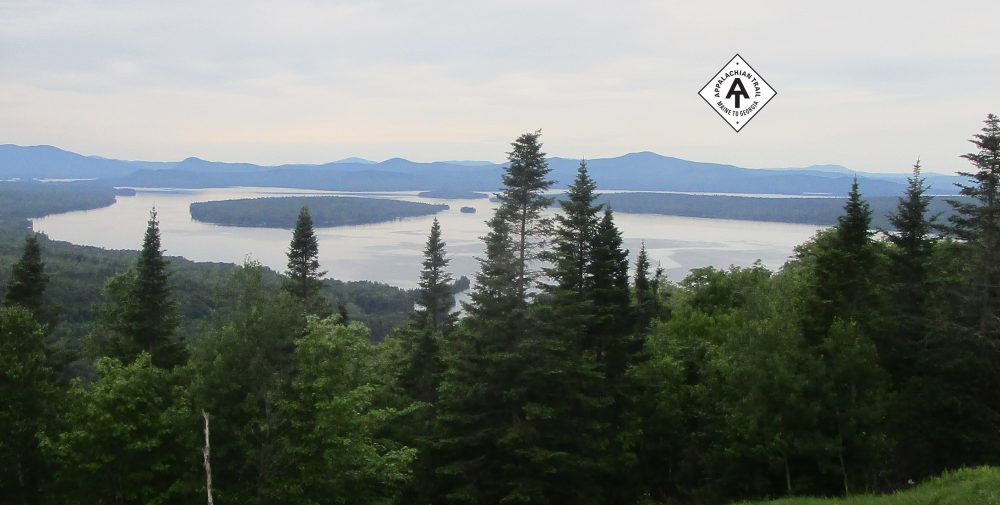Birch and I woke up early on July 22 so that we would be on one of the first boats to cross Jenny Lake. This crossing was the best way to get to the Cascade Canyon trailhead and it had the added bonus of providng us with a beautiful view.
Cascade Canyon is one of the more popular day hikes in the park, but few people make it much past inspiration point, a spot that affords a nice view of Jenny Lake. We were on the trail by 8:15 am so it wasn’t crowded. The first mile or so was very steep, with a 1000 ft. ascent through a canopy of pines. The trail was wide and easy to navigate. Several times we had the chance to look down at Jenny Lake and we took our time going up the trail, stopping at spots to enjoy the cascading water and the river that roars through the canyon.
I must say, Birch and I have finally found our trail legs. We are now used to the elevation and to carrying heavier packs. This made the ascent pretty easy and it wasn’t long before we were on a fairly flat trail. At one point we ran into a Park Ranger who warned us about the Marmots. Apparently, they like chewing trekking pole handles, backpack straps, and other things that taste salty.
At around 4.5 miles we reached the fork in the trail. We turned south to go on the “South Fork”. Finally, we were on the Teton Crest Trail! We began a steep incline and crossed several rapids/rivers. Luckily, the trail was in good shape. There was no snow and it was dry.
Immediately upon entering the camping zone we saw a great camp site. Without hesitation,we took it! We had amazing views of several peaks, including Grand Teton itself. The site was on a river that lived up to the “Cascade Canyon” name. As we looked out our tent, we could see a waterfall on one side, and the mountains on the other. We arrived pretty early (around 11:30 am) so there was plenty of time to relax.
At about 5 pm, a hiker named John and two of his friends joined us in camp. They had been on the trail many more days than us and John was carrying quite a load, including 40 ft. in rope, an ice axe and about 30 pounds of camera equipment. He told us that the rest of the South Fork was not to be missed. So, after dinner, Birch and I took a long hike (sans backpack!) up the trail. We took water and bear spray and went as far as we could while still being able to get back to camp before dark. The side trip was well worth it because we saw an enormous water fall that must have dropped thousands of feet down the side of a mountain.
 Sunday morning was chilly! We had coffee and breakfast, then packed up and descended the South Fork until we came to the North Fork. This trail had many open expanses that enabled us to see for miles. The views were breath-taking! The trail is well maintained with stairs in many spots. Before long we encountered bolder fields. Then we saw snow! The snow was mostly off the trail until we got to within a mile of Lake Solitude. The last few yards up to the lake were snowy and icy.
Sunday morning was chilly! We had coffee and breakfast, then packed up and descended the South Fork until we came to the North Fork. This trail had many open expanses that enabled us to see for miles. The views were breath-taking! The trail is well maintained with stairs in many spots. Before long we encountered bolder fields. Then we saw snow! The snow was mostly off the trail until we got to within a mile of Lake Solitude. The last few yards up to the lake were snowy and icy.
We arrived at the lake just in time for lunch. What an amazing sight, to see so much snow and ice in July! The trail is not well marked so I can see why the park rangers were cautious about people backpacking in this area. Lake Solitude is at 9100 ft. in elevation and we would have had to go another 1300 ft or so in elevation to cross a pass under difficult conditions.
Fortunately, our plan was to camp on North Fork. We went back down the trail and found a spectacular site about halfway down the mountain. The camp had a nice stream for water. However, the best thing about it was that it had a large boulder/ledge with a fallen tree for seating. This had a view that was jaw-dropping. And we had it all to ourselves! Birch made coffee and be basked in the sun while enjoying our surroundings.Late that night we woke up to star gaze. I don’t think I’ve ever seen such a night sky!
The next morning was bitter sweet. This would be our last day on the mountain. As we descended, I took time to take enjoy my surroundings. Before long we were at the fork that brought us to the Cascade Canyon trail. The farther we descended, the more day hikers we saw. We were back at the boat before lunchtime. It was done all too soon!












